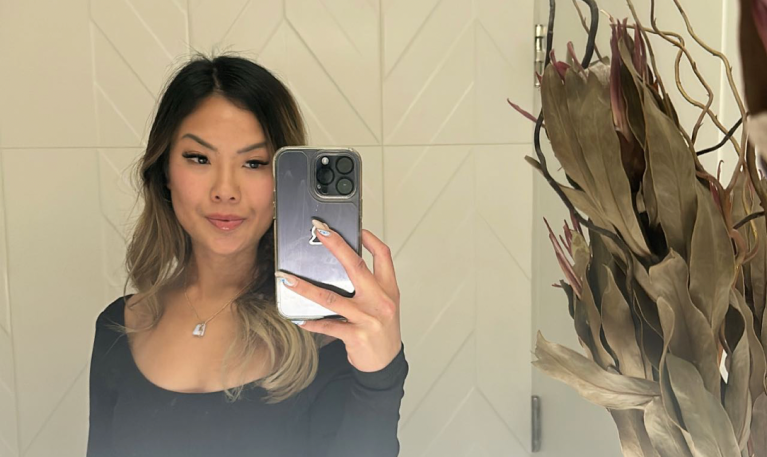On Having Bad Skin
When I was a little girl, I had the milky-white, nearly translucent, perfect skin of a redhead. It was the kind of skin that, between its near-invisible pores and soft dusting of freckles across the nose, elicited coos of “She looks like a little angel!” from strangers in the grocery store.

When I was a little girl, I had the milky-white, nearly translucent, perfect skin of a redhead. It was the kind of skin that, between its near-invisible pores and soft dusting of freckles across the nose, elicited coos of “She looks like a little angel!” from strangers in the grocery store. And when I would blush, there would be that perfect, gentle flare of pink across my plush, creamy cheeks that was the very definition of youthful charm. For a long time, my skin never crossed my mind. It just…was.
But one day–and it seemed, truly, to have happened overnight–around the age of 12, I woke up to find a small cluster of angry red bumps near my jawline. They were sore to the touch and seemed to grow and spread by the hour. Before I even knew what it was, I had full-fledged acne.
And so began my life with the kind of skin you see in “before” photos in acne commercials. Concerned, understanding dermatologists, in their efforts to alleviate at least some of my inflamed breakouts, dropped upon my pubescent shoulders the other bad news: I had rosacea, as well. Not only would my skin be constantly covered in unsightly, painful bumps for the foreseeable future, even a splash of tepid water could cause the blotchy, irritated redness to flame up on my cheeks, forehead, and chin. I felt as though my skin was angry with me, and that at any moment, it could take out its pent-up frustration on my face.
The (very valid) argument is often made that our representation of the “ideal” woman in fashion and advertising excludes anyone over a size-2, that women with feminine, curvy bodies are left to feel ugly and unwanted. Yet only someone who is in constant concern over the state of their skin will notice, as well, that the same ideal woman who fits in such incredibly slim jeans also has the flawless, creamy skin of a mannequin. And rightfully so–to have blotchy, scarred skin is aesthetically unappealing, and no one wants to put their product next to someone whose face seems to be losing a battle with the bubonic plague. I understand that society must present us as having perfect complexions, but it stung nonetheless.
Even television shows I watched would have an entire storyline devoted to a beautiful girl getting a single zit before a big date. One would think she had been diagnosed with stage-4 cancer for how much it seemed to ruin her life and plans. And how I came to deeply resent the girls at my school with beautiful, soft skin who would loudly complain when they found a single, barely noticeable blemish. Didn’t they know how that made me feel? Didn’t they know that their skin was flawless–that they’d never have to worry about Accutane or chemical peels or sulfur washes that made you smell like rotten eggs all day?
I learned to fear unflattering lighting the way one fears an important exam that they haven’t studied for–a deep knot would twist itself in my stomach as I knew, just knew, that people must be staring at my coarse, red skin. Even swimming, an activity I truly loved, I could not fully enjoy when out with my friends. Some people fear the beach or pool for having to reveal their body in an unforgiving bathing suit; I loathed it for the carefully-applied makeup that would unevenly slough off of my cheeks. I must have looked like a candle, melting in the sun.
One of my most distinct memories of adolescence is standing in front of a bathroom mirror at a dance, all of fifteen years old, under fluorescent light. As I adjusted my mascara with my thumb and fluffed my perfectly-coiffed hair, I remember this acute feeling of, “What does it even matter? Your face looks like red sandpaper.” I felt as though all of the preparation and effort put in to make myself “beautiful” for the evening was just a joke that only I wasn’t in on–the only thing anyone could see, surely, was my disgusting face. I remember holding the edges of the sink and starting to cry, wishing to be anywhere else.
As I grew out of my teen years, I noticed the acne beginning to subside. I wore less and less makeup until I didn’t wear any at all. (I still love my mascara and lip gloss, but I won’t touch foundation with a ten-foot pole.) I began to pull my hair back into “here’s my face, everyone” ponytails, and didn’t automatically shudder when I stepped into abrasive lighting. The gentle pink flush of summertime and the freckles across my shoulders and nose became welcome, happy reminders that the worst was now behind me.
I still flush easily, and I still get breakouts now and again, but my skin has reached a kind of stasis. I am confident that I won’t wake up anymore, like I used to some mornings, with skin so inflamed I don’t want to leave the house. And there have been truly important moments, like the time when he touched my cheek in the dark and I didn’t immediately recoil–when I nuzzled my skin into the palm of his hand and realized it was the first time I’d ever let someone do it. When he told me he loved the red flush of my cheeks when I have a glass of wine or laugh too hard, I felt more beautiful than I’d ever felt in my life.
I suppose we all have our battles with our appearance, and though some of us may be lucky enough not to have to wear it on our faces, I know that to feel unique in my struggle with my beauty would be foolish. But I also know that for a long time, maybe forever, I will see someone looking at my face from across a room and wonder, if only briefly, what exactly it is they’re seeing. ![]()




